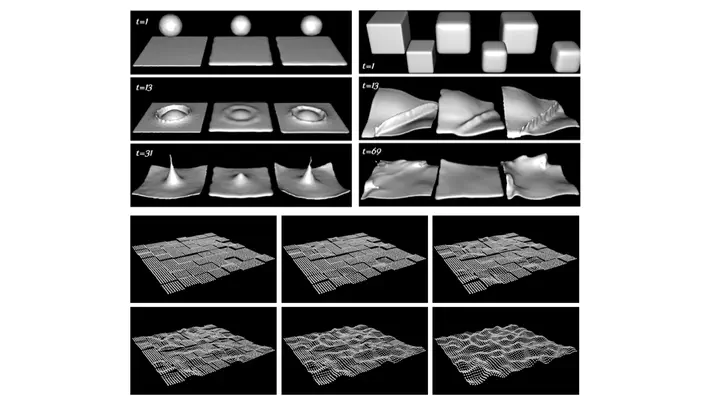 Image credit: Unsplash
Image credit: Unsplash
Abstract
In computer graphics, modeling natural phenomena, such as fluids, is a complex task and requires significant computation time. Moreover, adding small details in fluid simulations, such as surface turbulence, is an active research topic in the field of visual effects. Our interest in this research is to preserve those small details, especialy at the free surface of the fluid. The discretization of these phenomena requires millions of particles in order to achieve a result similar to the exact solution. However, simulating such a large number of particles is a time consuming process. Besides, the behaviour of a fluid simulation is highly dependent on the number of particles. In addition, it is sometimes difficult to obtain the desired result with such simulations. Some important features may become visible by simply increasing the number of particles of the simulation. The kinetic energy and turbulence forces are also important factors that can influence the behaviour of the fluid. The proposed approach in this master’s thesis aims to recreate the surface appearance of a high-resolution fluid based on low- and high-resolution fluid examples from a dictionary learning method. The learning process is made with a coupled dictionary which is generated from concatenated dictionaries. All dictionaries are used to establish a correspondence between the surface geometric features and physical fluid properties from learned examples. These examples are represented by patches of the fluid surface. Our method considers these geometric patches as height fields. The energy spectrum and vorticity forces are also evaluated per patch in order to preserve the observed physical properties of the fluid. Reconstructing new patches is formulated as an optimization problem with geometric and physical constraints. The minimization result is a linear combination of the dictionary atoms. This weighted sparse vector is used to generate a high-resolution representation of each patch of the input low-resolution fluid. In some cases, a spatial term must be added to force the patch borders to be aligned with their neighbors. This approach allows to model the overall appearance of the high-resolution fluid surface with only a few thousand particles. Moreover, this process is done in a fraction of the computation time required to generate the high-resolution fluid. Despite the fact that the objectives are not the same as with vortex particle methods, our approach can be used together with these to generate more realistic and low-cost high-resolution fluid.
Supplementary notes can be added here, including code, math, and images.